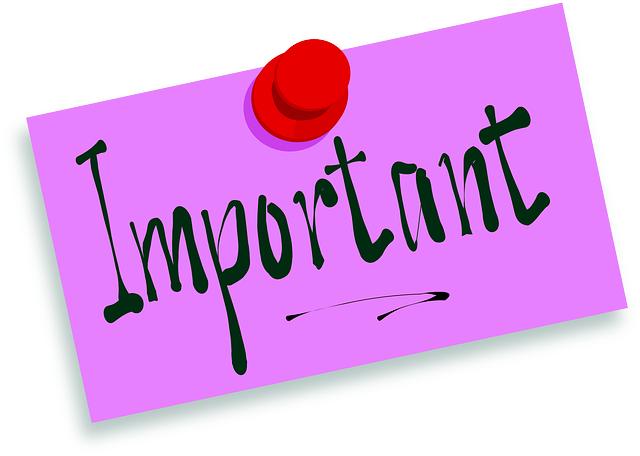- Introduction
- Importance of Plagiarism Checkers
- Top Free Plagiarism Checkers
- How to Use Plagiarism Checkers Effectively
- Best Practices for Avoiding Plagiarism
- Conclusion
- FAQs
Introduction
In an era where information is abundant and easily accessible, ensuring the originality of your work is paramount. Plagiarism not only devalues the integrity of authorship but also has serious consequences in academic and professional settings. In this article, we will delve into the significance of plagiarism checkers, explore some of the top free online tools available, provide guidance on how to use them effectively, and share best practices to help you avoid unintentional plagiarism. By the end, you'll be equipped with the knowledge to unlock your originality and safeguard your intellectual creations.
Importance of Plagiarism Checkers

(Image: Pixabay/@Clker-Free-Vector-Images)
With the rise of digital content creation, plagiarism has become a critical issue. Many writers, students, and professionals are unaware of the extent to which they may inadvertently duplicate someone else's ideas or language. This can happen while researching topics, summarizing articles, or even using common phrases without proper attribution. The importance of plagiarism checkers lies in their ability to detect potential similarities between your text and existing sources.
These tools not only serve as a safety net for academics and professionals who wish to maintain ethical writing standards, but they also bolster your credibility as a creator. By ensuring that your work is original, you foster trust among your readers, clients, and peers. Moreover, similar to how one would spell-check their writing, incorporating plagiarism checks is a fundamental step in the writing process.
In educational institutions, the repercussions of plagiarism can be severe, ranging from receiving a failing grade to expulsion. Hence, using plagiarism checkers becomes essential for students striving to uphold academic integrity. Furthermore, for professionals, plagiarism can lead to legal consequences and loss of reputation, highlighting the immense value of these digital tools.
As we continue exploring plagiarism checkers, it's crucial to recognize their impact on the broader landscape of authenticity in writing. Embracing these tools not only protects your work but also enriches the overall quality of content available in our digital world.
Top Free Plagiarism Checkers

(Image: Pixabay/@Pexels)
There are several effective free plagiarism checkers available online that can help maintain your content's originality. Here's a list of some highly recommended options:
1. Grammarly - While primarily known for its grammar-checking capabilities, Grammarly also offers a plagiarism detection tool embedded within its premium version. However, if you're looking for free checks, it still provides insights into your writing style and potential improvements.
2. Quetext - This user-friendly tool allows users to check for plagiarism against billions of web pages. Its DeepSearch technology helps highlight copied content and presents source links for easy reference. The free version has limitations but still provides a comprehensive report for shorter texts.
3. Small SEO Tools - This platform features a robust plagiarism checker that scans your text across various online resources. It’s ideal for quick checks and provides instant results. Additionally, it has features for grammar checking and other SEO-related tools, making it a versatile choice for writers.
4. Plagscan - While it offers premium services, Plagscan also provides free trials for individuals looking to assess their work for plagiarism. Its advanced algorithms deliver precise reports on content similarity and source attribution.
5. PaperRater - This grammar and plagiarism checking tool caters specifically to students. It evaluates the writing for both originality and quality, offering suggestions for improvement. The free version allows users to check papers efficiently within set limitations.
How to Use Plagiarism Checkers Effectively

(Image: Pixabay/@OpenClipart-Vectors)
Utilizing plagiarism checkers effectively requires a structured approach. Here are some practical steps to follow:
1. Prepare Your Text - Before running your work through a plagiarism checker, ensure that all text is complete and polished. Raw drafts may yield misleading results due to inconsistencies or errors.
2. Use Specific Tools for the Purpose - Different checkers have varying strengths. Depending on your needs—whether it’s academic rigor or general content creation—choose a tool that aligns with your intent. Some checkers are better for longer texts, while others may excel in checking brief passages.
3. Review the Report Thoroughly - After generating a plagiarism report, don’t rush through it. Inspect the highlighted sections and review the sources cited. Verify the legitimacy of any claims made by the checker, verifying the context before making changes.
4. Revise Accordingly - If you find pieces of text that are flagged and deemed duplicated, be proactive in revising those sections. Paraphrase or simplify the language, and make sure to cite sources when necessary. Maintaining the essence of your message while ensuring originality is key.
Best Practices for Avoiding Plagiarism

(Image: Pixabay/@TheDigitalArtist)
Avoiding plagiarism goes beyond merely running checks—it encompasses mindful writing habits. To strengthen your originality, consider these best practices:
1. Take Effective Notes - While researching, take detailed notes, ensuring to track where specific information originates. Distinguishing between your thoughts and sourced material is vital to prevent accidental copying.
2. Paraphrase Thoughtfully - When conveying information from sources, practice paraphrasing rather than copying verbatim. Focus on understanding the material, then restate it in your unique voice while maintaining the core idea.
3. Proper Citation - Familiarize yourself with citation styles relevant to your field (e.g., APA, MLA, Chicago, etc.). Accurate citations are essential for any borrowed ideas, quotes, or specific data. Consistent accuracy in citations adds immensely to your credibility as a writer.
4. Use Quotations Wisely - When you need to include exact phrases from a source, do so judiciously. Quotations should support your argument or narrative, but over-reliance on them may dilute your originality. Always accompany quotes with citations to give credit.
Conclusion
Preserving originality in your written work is not just about ethics; it's about establishing your identity as a creator. Through the use of plagiarism checkers, you gain valuable insight into your writing, fostering a commitment to authenticity and integrity. The myriad of free tools available means that regardless of your scholarly or professional background, you can nurture your creativity without the worry of unintentional infringement.
Moreover, practicing consistent methodologies to avoid plagiarism enhances your skills as a writer, preparing you for future endeavors. Remember that writing is a journey, and maintaining originality is a crucial part of that process. Equip yourself with the right tools and knowledge, and you will not only unlock your creativity but also build a reputable presence as a thoughtful and conscientious writer.
FAQs
What constitutes plagiarism?
Plagiarism involves taking someone else's work, ideas, or expressions and presenting them as your own without proper acknowledgment. This includes direct copying, paraphrasing without citation, and even reusing one's prior work without disclosure.
Are free plagiarism checkers reliable?
While free plagiarism checkers can be useful, their reliability varies based on the algorithms and databases they use. They may not catch everything that a paid service would, but they can serve as a good starting point for initial checks.
Can I rely solely on plagiarism checkers to ensure my work is original?
While plagiarism checkers are valuable tools, they shouldn't be the only measure of originality. It's essential to cultivate good writing habits, including effective research techniques and proper citation practices.
What should I do if my work is flagged for plagiarism?
If your work is flagged, carefully review the highlighted sections. Determine if the similarities are due to common knowledge or incorrect citation. Revise your text by paraphrasing where needed and ensure all sources are appropriately credited.
How often should I check my writing for plagiarism?
It's advisable to check your writing for plagiarism at key stages— such as when drafting, revising, and finalizing your work. Regular checks can help ensure that you're upholding standards of originality throughout the writing process.
